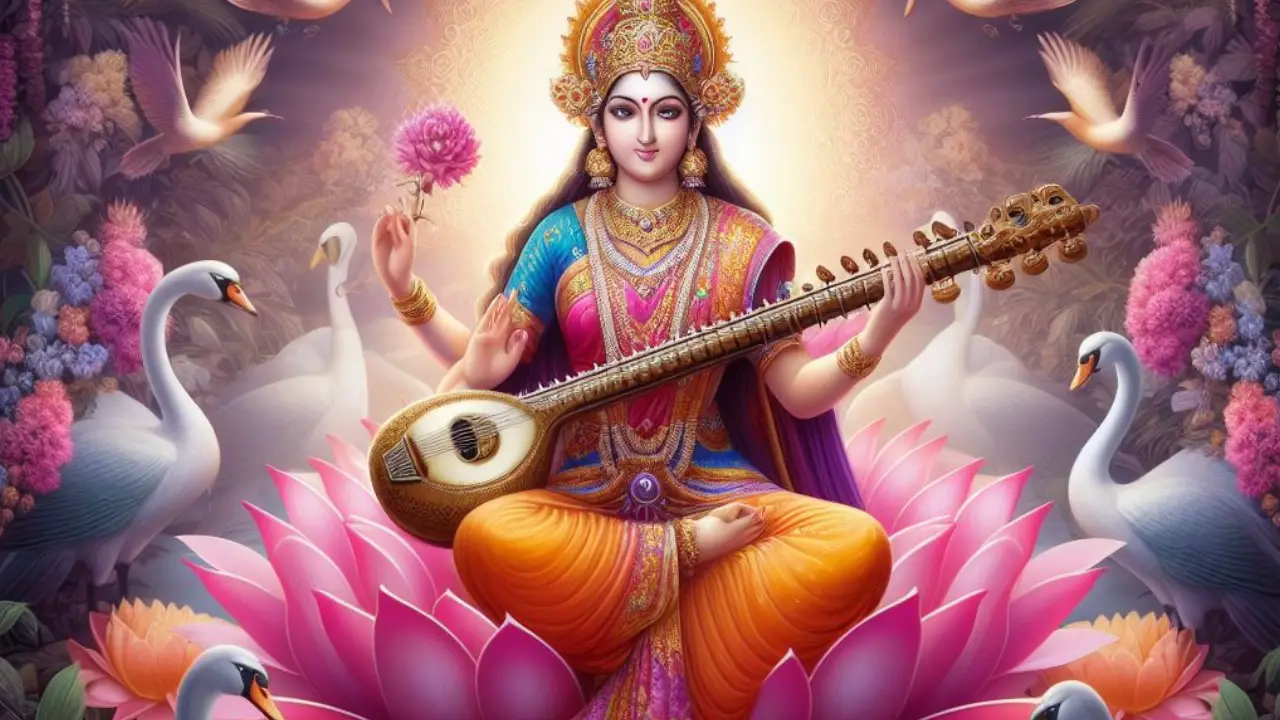Hindus in India and around the world celebrate Saraswati Puja, also known as Basant Panchami, as one of their most important festivals. They dedicate this festival to the worship of Saraswati, the Hindu goddess of knowledge, wisdom, learning, music, and art. Every year, people celebrate Saraswati Puja on the fifth day of the Hindu month of Magha (January/February), and they also refer to it as Basant Panchami or Shree Panchami.
Saraswati Puja is an occasion to celebrate the power of knowledge and wisdom. It is believed that on this day, Saraswati descended on Earth to bless mankind with the gift of knowledge. Devotees of Saraswati celebrate this day by offering prayers and seeking her blessings for success and prosperity in their academic and artistic pursuits.
The Origins of Saraswati Puja
The origins of Saraswati Puja can be traced back to ancient India. Hindu mythology depicts Saraswati as the consort of Brahma, the creator of the universe. She appears as a beautiful woman with four arms, riding on a white swan. She holds a book, a rosary, and a veena (a stringed musical instrument) in three of her hands, while the fourth hand is in the gesture of blessing.
People consider Saraswati to be the embodiment of knowledge, wisdom, and creativity. They also recognize her as the patron goddess of the arts, music, and literature. Students, scholars, artists, and musicians worship her for her blessings and guidance.
Celebrations in India
Saraswati Puja is celebrated with great fervor and enthusiasm across India. It is especially popular in the eastern states of West Bengal, Assam, and Orissa. The festival is celebrated in homes, schools, colleges, and temples. Devotees of Saraswati prepare for the festival by cleaning their homes and dressing up in new clothes. They decorate their homes and puja mandaps (worship altars) with flowers, candles, and lamps.
On the day of Saraswati Puja, devotees wake up early in the morning and take a bath. They wear yellow clothes, which is considered to be the favorite color of Saraswati. They offer prayers to the goddess and seek her blessings. The puja involves the chanting of mantras, the offering of flowers, fruits, and sweets, and the lighting of candles and incense sticks.
Celebrating with Children
One of the most significant aspects of Saraswati Puja is the tradition of initiating young children into the world of learning. People believe that on this day, Goddess Saraswati blesses children with knowledge and wisdom. Parents bring their children to the puja and have them write their first alphabets on this day, as they consider it auspicious.
The teachers then initiate the children into the world of learning and encourage them to pursue their studies with devotion and dedication.
Schools and colleges celebrate Saraswati Puja as a cultural festival. Students dress up in traditional attire and perform cultural programs such as dance, music, and drama. They also participate in literary competitions and debates. The festival is an occasion to celebrate the power of knowledge and creativity.
People across India also celebrate Saraswati Puja in temples. Devotees visit the temples to offer prayers to the goddess and seek her blessings. They decorate the temples with flowers and lights, filling the atmosphere with the sound of devotional music and chants.
The Rituals and Traditions
The preparations for Saraswati Puja commence several days in advance, with devotees cleaning and decorating their homes and setting up elaborate altars to place the idol or image of Goddess Saraswati. On the day of the puja, the devotees beautifully adorn the idol with flowers, garlands, and other offerings. They place books, musical instruments, art supplies, and tools of learning before the deity, seeking her blessings to infuse these objects with knowledge and creativity.
As the rituals unfold, incense fills the air, and the sound of prayers and chants reverberates through the surroundings, creating a deeply spiritual ambiance. Devotees offer flowers, fruits, sweets, and other items as offerings to the goddess, seeking her guidance and grace. The priests, in their ceremonial attire, perform the puja with utmost devotion and precision.
The Significance of Saraswati Puja
Saraswati Puja is a time to reconnect with the divine and seek the blessings of the goddess of knowledge and creativity. The festival is an occasion to celebrate the power of knowledge and wisdom. It is a time to reflect on the importance of education and the pursuit of knowledge.
Saraswati Puja is also a time to celebrate the arts and literature. The festival is a platform for artists and musicians to showcase their talent and creativity. It is an occasion to promote the rich cultural heritage of India and celebrate the diversity of its traditions.
The festival also has a social significance. It is a time to strengthen relationships with family and friends. The community celebrates Saraswati Puja as a festival. They come together to share their joy and happiness. It is a time to forget differences and come together to celebrate the beauty of life.
Overall, Saraswati Puja is a festival that celebrates knowledge, wisdom, and creativity. It is an occasion to seek the blessings of the goddess of learning and to promote the pursuit of education and artistic endeavors. The festival is a symbol of India’s rich cultural heritage and serves as a reminder of the importance of preserving and promoting it for future generations.

